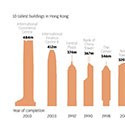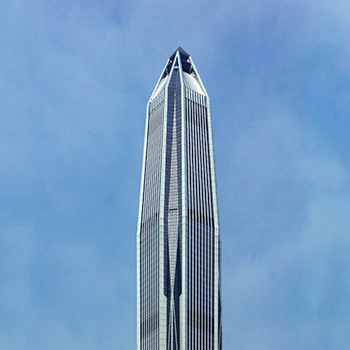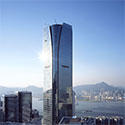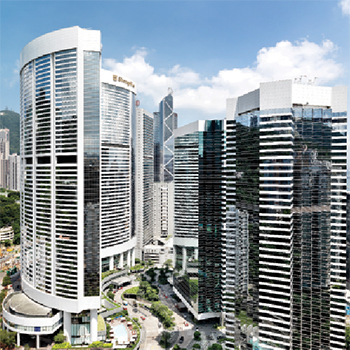Filter by
You must be a CTBUH Member to view this resource.

One Island East
Building
Completed
2008
Office
All-Concrete
BEAM Platinum
298.1 m / 978 ft
68
2
37
142,792 m² / 1,537,000 ft²
You must be a CTBUH Member to view this resource.
You must be a CTBUH Member to view this resource.
The Design Engineer is usually involved in the front end design, typically taking the leadership role in the Schematic Design and Design Development, and then a monitoring role through the CD and CA phases.
The Design Engineer is usually involved in the front end design, typically taking the leadership role in the Schematic Design and Design Development, and then a monitoring role through the CD and CA phases.
Other Consultant refers to other organizations which provided significant consultation services for a building project (e.g. wind consultants, environmental consultants, fire and life safety consultants, etc).
These are firms that consult on the design of a building's façade. May often be referred to as "Cladding," "Envelope," "Exterior Wall," or "Curtain Wall" Consultant, however, for consistency CTBUH uses the term "Façade Consultant" exclusively.
Material Supplier refers to organizations which supplied significant systems/materials for a building project (e.g. elevator suppliers, facade suppliers, etc).
You must be a CTBUH Member to view this resource.
Usually involved in the front end design, with a "typical" condition being that of a leadership role through either Schematic Design or Design Development, and then a monitoring role through the CD and CA phases.
The Design Engineer is usually involved in the front end design, typically taking the leadership role in the Schematic Design and Design Development, and then a monitoring role through the CD and CA phases.
The Design Engineer is usually involved in the front end design, typically taking the leadership role in the Schematic Design and Design Development, and then a monitoring role through the CD and CA phases.
The main contractor is the supervisory contractor of all construction work on a project, management of sub-contractors and vendors, etc. May be referred to as "Construction Manager," however, for consistency CTBUH uses the term "Main Contractor" exclusively.
Other Consultant refers to other organizations which provided significant consultation services for a building project (e.g. wind consultants, environmental consultants, fire and life safety consultants, etc).
These are firms that consult on the design of a building's façade. May often be referred to as "Cladding," "Envelope," "Exterior Wall," or "Curtain Wall" Consultant, however, for consistency CTBUH uses the term "Façade Consultant" exclusively.
Material Supplier refers to organizations which supplied significant systems/materials for a building project (e.g. elevator suppliers, facade suppliers, etc).
20 September 2014 - Event
22 September 2012 - Event

20 October 2016 | Hong Kong
Thursday October 20, 2016. Hong Kong, China. Eric Ma of Hong Kong Special Administrative Region presents at the 2016 China Conference Plenary 6: Hong Kong...

17 October 2016
CTBUH 2016 Conference Speakers
The CTBUH 2016 International Conference is being held in the three cities of the Pearl River Delta, the world’s largest “megacity,” projected to have 120...
One Island East comprises 59 office floors with a typical floor plate of 2,300 square meters (24,760 square feet). One Island East is the landmark of Taikoo Place, recognized as one of the Hong Kong’s best planned business hubs, managed by Swire Properties. The portfolio offers some 6 million sq ft of prime commercial space for local and multinational corporations.
The basic form of the building is a square plan with rounded corners and a central core. The two corners facing north and south open up at the top floors to address the Harbor view. At the base, the two corners facing east and west open up to address the open space. The edges of the four façades sail beyond, creating a floating effect and giving lightness to the building. Architectural fins are introduced on the façade in a staggered pattern to add texture and scale.
Without a podium structure, the tower sits freely in front of a large landscaped open space to the east. The canopy at the porte cohere is specially designed as a piece of sculpture. The landscaped area beyond is designed to have platforms at different levels incorporating water features. This urban landscape gives an appropriate scale as a forecourt to the building and provides a leisure space for both the enjoyment of office workers and for the neighborhood.
The upper main lobby is connected to the rest of the office complex at TaiKoo Place via a bridge at the northwest corner. Through a well-established system of link bridges at the existing podium level, pedestrians can gain convenient access to the MTR Quarry Bay Station. The One Island East building not only energizes the whole of TaiKoo Place, it also plays a leading role in transforming the neighborhood into a better environment.

20 October 2016 | Hong Kong
Thursday October 20, 2016. Hong Kong, China. Eric Ma of Hong Kong Special Administrative Region presents at the 2016 China Conference Plenary 6: Hong Kong...

17 October 2016 | Hong Kong
In the age of the multi-million inhabitant city, the concept of a single, concentrated Central Business District is increasingly becoming unsustainable. As we are seeing...

17 October 2016
CTBUH 2016 Conference Speakers
The CTBUH 2016 International Conference is being held in the three cities of the Pearl River Delta, the world’s largest “megacity,” projected to have 120...

17 October 2016
Tim Balckburn, Swire Properties
In the age of the multi-million inhabitant city, the traditional concept of a single Central Business District (CBD) is becoming increasingly unrealistic. As we are...

31 December 2008
CTBUH Research
Against the backdrop of global economic crisis, 2008 witnessed the most successful year of skyscraper construction to date, with more skyscrapers constructed globally within a...
20 September 2014
The tour began at Hong Kong’s One Island East, a 298-meter office building. After a day of activity and touring, the tour ended with an evening harbor cruise, on a Chinese junk.
Subscribe below to receive periodic updates from CTBUH on the latest Tall Building and Urban news and CTBUH initiatives, including our monthly newsletter. Fields with a red asterisk (*) next to them are required.
View our privacy policy